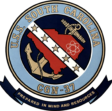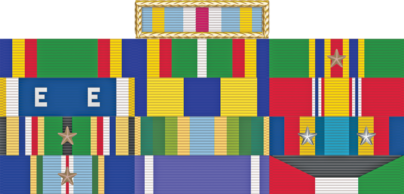
USS South Carolina Association
History of the USS South Carolina
From 1975 through 1998, from combat operations off the coast of Bosnia to rescuing refugees in the Caribbean, the SOUTH CAROLINA was always prepared to answer the call to duty. Be it power or peace, SOUTH CAROLINA served with pride for nearly a quarter century.
The USS SOUTH CAROLINA, sister ship to the California and the fifth of the Navy’s Nuclear Nine, began life as a frigate using the hull code DLGN (destroyer leader, guided missile, nuclear), prior to the enactment of the 1975 ship reclassification plan, in which it was reclassified as a cruiser.
The SOUTH CAROLINA has a design overall length of 596 feet and an extreme beam of 61 feet. Her full load displacement is approximately 10,100 tons with a maximum draft of 30 feet, 5 inches. To propel the ship through the water at speeds in excess of 30 knots, the engineering spaces house two nuclear fission reactors which power a set of geared turbines and twin screws.
SOUTH CAROLINA'S mission is to operate independently, or in company, with strike, antisubmarine or amphibious forces, against possible submarine, air and surface threats. To accomplish this task, SOUTH CAROLINA incorporates the power of two Tartar missile systems, (one forward and one aft); an antisubmarine rocket system (ASROC); two 5-inch, 54 caliber lightweight guns; and four torpedo launchers. Additionally SOUTH CAROLINA will utilize the AN/SQS-26CX long-range sonar equipment rounding out her capabilities as a three-dimensional fighting ship.
The official crest of the USS SOUTH CAROLINA is highly symbolic of the ship it so strikingly represents. The circular shield displays the never-ending diligence and continuity of service with which the SOUTH CAROLINA will serve the United States Navy. Below the shield, written in colors of Navy blue and gold, are the words of the motto of the state of South Carolina, “Prepared in Mind and Resources,” a motto which the USS SOUTH CAROLINA will be proud to uphold. The bright red outline of the state, superimposed over the gold anchor, represents the ship surrounded by the Navy blue waters over which it will reign. In the right-hand portion of the state outline is the symbol of the atom, power source of the new frigate. The five gold stars spaced across the shield is a reminder that this is the fifth ship named SOUTH CAROLINA to serve in the United States Navy. Finally, the overall color scheme of red, white, and blue, leaves no doubt as to the nation which this ship so proudly serves.
The 1970s
The prehistory of SOUTH CAROLINA begins on December 1, 1970. Mrs. Margaret Rivers, wife of the late L. Mendel Rivers of South Carolina, authenticated the ship’s keel by hammering the Naval Inspector’s Seal into a commemorative plaque and announcing that the keel was truly and fairly laid.
In May 1972, more than two dozen sailors received orders that would eventually lead them to the SOUTH CAROLINA, still under construction at Newport News Shipyard.
On July 1, 1972, Mrs. Imogene Buzhardt, wife of J. Fred Buzhardt, then General Counsel, Department of Defense, christened the ship SOUTH CAROLINA.
Capt. William C. Neel assumed command of the Precommissioning Unit, and with Executive Officer Lt. Cdr. Joseph King reported aboard in February 1973.
Crew members began to move onto the ship in September 1974. The ship was delivered on December 9, 1974, and commissioned on January 25, 1975. At the time, it was anticipated that SOUTH CAROLINA would be transferred to the Pacific Fleet in San Diego in 1976. Instead, she remained in Norfolk throughout her time of service.
After commissioning, SOUTH CAROLINA completed fitting out, Combat Systems Qualifications and Refresher Training in the Caribbean from May through July 1975. SOUTH CAROLINA conducted her first port visit, at the request of Senator Strom Thurmond, to her namesake state, visiting Charleston.
During August and September of that year, she participated in her first operational North Atlantic deployment with the NIMITZ Battle Group.
Subsequently, SOUTH CAROLINA participated in Exercise Solid Shield in the Caribbean and completed her first Mediterranean deployment in February 1977.
SOUTH CAROLINA, in company with her sister ship, CALIFORNIA, and NIMITZ commenced a second Mediterranean deployment in November 1977 and returned to Norfolk in July 1978.
SOUTH CAROLINA deployed again to the Mediterranean in January 1979 with the DWIGHT D. EISENHOWER Battle Group.

The 1980s
In 1980, SOUTH CAROLINA deployed as part of the first Atlantic battle group to spend an entire deployment in the Indian Ocean during the Iran crisis.
After a cruise to the Virgin Islands in November 1981, SOUTH CAROLINA deployed in January 1982 for a six-month deployment with DWIGHT D. EISENHOWER.
SOUTH CAROLINA underwent her first overhaul at Norfolk Naval Shipyard from January 1983 to May 1984. Upon completion, she participated in Caribbean exercises, enjoying port visits to Puerto Rico, St. Croix and Nassau.
SOUTH CAROLINA made her second visit to her namesake state in October 1984. The ship hosted numerous dignitaries, including the governor of South Carolina during her visit to a Charleston. She also visited Annapolis, Maryland, that year.
In 1985, SOUTH CAROLINA began a new year by conducting preparatory exercises in the Caribbean. She deployed to the Mediterranean in March and completed the deployment seven months later. SOUTH CAROLINA spent the majority of the deployment on station off Lebanon, in the wake of the hijacking of TWA Flight 847.
SOUTH CAROLINA underwent her second extended maintenance period from October 1985 to June 1986. She departed in July 1986 for a North Atlantic Cruise, and made port visits to Wilhelmshaven, Germany, and Olso, Norway.
Upon her return to Norfolk, SOUTH CAROLINA commenced preparations for overseas deployment and got underway on December 30, 1986, with the NIMITZ Battle Group. SOUTH CAROLINA completed her seventh Deployment on June 30, 1987.
In February 1988, SOUTH CAROLINA participated in the FLEETEX 2-88, and made an Independence Day visit to Nassau.
On August 1, 1988, the state of South Carolina officially adopted USS SOUTH CAROLINA as the state flagship. Approximately 1,200 visitors toured the ship on that day in Charleston.
SOUTH CAROLINA sailed in August 1988 to participate in the NATO Northern Wedding exercise with the USS THEODORE ROOSEVELT Battle Group off the coast of Norway. She conducted joint exercises and a port visit to Wilhelmshaven, Germany. She returned home in October 1988 to make final preparations for deployment.
SOUTH CAROLINA deployed to the Mediterranean in December 1988 with the THEODORE ROOSEVELT Battle Group. During this deployment, SOUTH CAROLINA and THEODORE ROOSEVELT helicopters teamed up to rescue the crews of seven yachts disabled by heavy weather.
SOUTH CAROLINA return to Norfolk on June 30, 1989, and began a four-month availability at Norfolk Naval Shipyard following a one-month Caribbean visit in support of operations with FORRESTAL.

The 1990s
SOUTH CAROLINA departed January 5, 1990, for Limited Team Training in Guantanamo Bay, Cuba, followed by READIEX BASIC from January 26 to February 15, 1990, in the Puerto Rico operating area.
SOUTH CAROLINA again set sail for the Caribbean on March 12, 1990, for law enforcement operations returning on April 13, 1990, having acted as Coast Guard COMCARIBRON flagship and making two drug interdictions. SOUTH CAROLINA returned to the Caribbean in July for counter narcotics operations, where she served as flagship for Commander, Joint Task Group 4 and COMCARIBRON.
SOUTH CAROLINA departed October 1, 1990, for operations with the SARATOGA Battle Group. Following a solo trans-Atlantic crossing, SOUTH CAROLINA transited the Suez Canal for the first time in her history.
During Operation Desert Shield, she served as flagship for COMDESRON 24, the Maritime Interdiction Force Commander in the northern Red Sea. SOUTH CAROLINA conducted twenty-seven boardings during Maritime Interdiction Force operations. Admiral Frank Kelso, Chief of Naval Operations, visited SOUTH CAROLINA on station November 7, 1990.
Upon completion of Maritime Interdiction Force operations, SOUTH CAROLINA was selected as the first nuclear powered warship to visit Jeddah, Saudi Arabia. In January 1991, SOUTH CAROLINA participated in operations in the Central Mediterranean with the THEODORE ROOSEVELT and AMERICA Battle Groups.
She sortied early from Taranto, Italy January on 17, 1991, at the start of Operation Desert Storm. SOUTH CAROLINA acted as an Anti-Air Warfare Commander for the Mediterranean, protecting operation Silver Cloud air corridors and the approaches to the Suez Canal. SOUTH CAROLINA acted as on-scene commander and supervised the recovery of four survivors and 29 bodies from the sinking merchant ship Continental Lotus. SOUTH CAROLINA returned to homeport on March 28, 1991.
SOUTH CAROLINA entered Norfolk Naval Shipyard for a Combat System New Threat Upgrade and refueling of both reactors and left the shipyard March 30, 1994, with a new lease on life.
SOUTH CAROLINA's first post-refueling employment was to the Straits of Florida during October and November 1994 to rescue Cuban refugees who were fleeing their homeland in hopes of reaching the United States. SOUTH CAROLINA commenced workups in the spring in preparations for her next major deployment.
In the fall of 1995, SOUTH CAROLINA started her eleventh deployment. This cruise saw service off the coast of the former republic of Yugoslavia in support of Operations Deny Flight, Sharp Guard and Decisive Endeavor. SOUTH CAROLINA acted as “Green Crown” and Air Warfare Commander in the Adriatic Sea. SOUTH CAROLINA returned to homeport in the spring of 1996.
History adapted from the USS South Carolina decommissioning program

Awards
Row 1
Joint Meritorious Unit Award
Row 2
Navy Unit Commendation • Coast Guard Unit Commendation • Navy Meritorious Unit Commendation (2 awards/1 star)
Row 3
Battle Efficiency Award (2) • Navy Expeditionary Medal • National Defense Service Medal
Row 4
Southwest Asia Service Medal • Armed Forces Service Medal • Sea Service Deployment Ribbon (11)
Row 5
Coast Guard Special Operations Service Ribbon (2 awards, 1 service star) • NATO Medal for the former Yugoslavia • Kuwait Liberation Medal

Planned and built as Guided Missile Frigate (DLGN)
California class
Awarded: June 13, 1968
Laid down: December 1, 1970
Launched: July 1, 1972
Commissioned: January 25, 1975
Reclassified CGN-37: June 30, 1975
Deactivated: August 28, 1998
Decommissioned: July 30, 1999
Scrapping completed: May 10, 2010
Call sign: NLVQ
USS South Carolina Association • All rights reserved • info37.org
